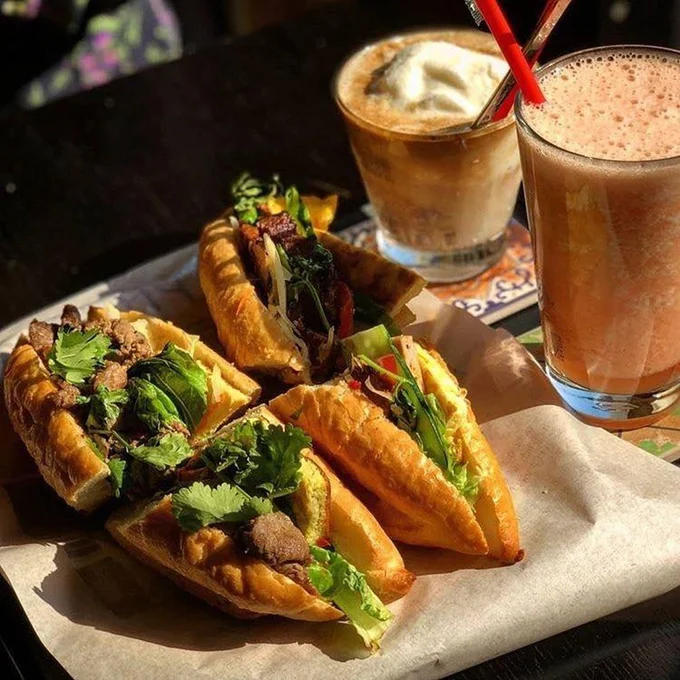Address of Banh Mi Ba Lan, Da Nang:
-
62 Truong Queen, Hai Chau
Source: Collected internet.
The North and North Central regions have a humid subtropical climate with 4 seasons: Spring, Summer, Autumn, and Winter. The Central and South Central regions have a tropical monsoon climate, the extreme South Central and Southern regions have tropical savanna characteristics. At the same time, it is directly influenced by the trade monsoon climate, which often blows in low latitudes. The South often has a tropical savanna climate, hot and humid with two seasons: dry season and rainy season (from April-May to October-November). Every year, the cold and humid winter typical of the North contrasts with the warm atmosphere of Tet and spring in the South.
The streets paint the lives of Vietnamese people. The streets here are not just for traveling. Streets and sidewalks are also places to shop, eat, meet for a cup of coffee, get a haircut or rest. Big cities are always full of life with the roar of millions of motorbikes, where you can feel a constant source of energy bubbling on every street.
With a history of fighting against invaders to protect the land, win freedom, independence and build the country dating back thousands of years by the Vietnamese people and the convergence of 54 other ethnic groups. each other has contributed to the diversity, richness and uniqueness of Vietnam's culture.
Vietnam's history began from 1 to 2 thousand years BC. Over many centuries with the Ly, Tran, Le, and Nguyen dynasties, from the mid-19th century, Vietnam became a French colony. After the August Revolution, the Democratic Republic of Vietnam was born. The Battle of Dien Bien Phu in 1954 marked the end of the French in the territory, but Vietnam was divided into two countries: the Democratic Republic of Vietnam in the North and the Republic of Vietnam in the South. After the events of April 30, 1975, Vietnam was unified and from July 2, 1976, officially named the Socialist Republic of Vietnam.
